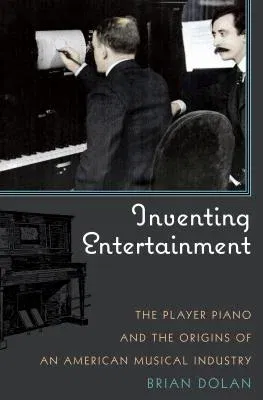Brian Dolan
(Author)Inventing Entertainment: The Player Piano and the Origins of an American Musical IndustryHardcover, 1 October 2008

Qty
1
Turbo
Ships in 2 - 3 days
In Stock
Free Delivery
Cash on Delivery
15 Days
Free Returns
Secure Checkout

Print Length
232 pages
Language
English
Publisher
Rowman & Littlefield Publishers
Date Published
1 Oct 2008
ISBN-10
0742561275
ISBN-13
9780742561274
Description
Product Details
Author:
Book Format:
Hardcover
Country of Origin:
US
Date Published:
1 October 2008
Dimensions:
22.86 x
15.24 x
2.54 cm
ISBN-10:
0742561275
ISBN-13:
9780742561274
Language:
English
Location:
Lanham, MD
Pages:
232
Publisher:
Weight:
498.95 gm